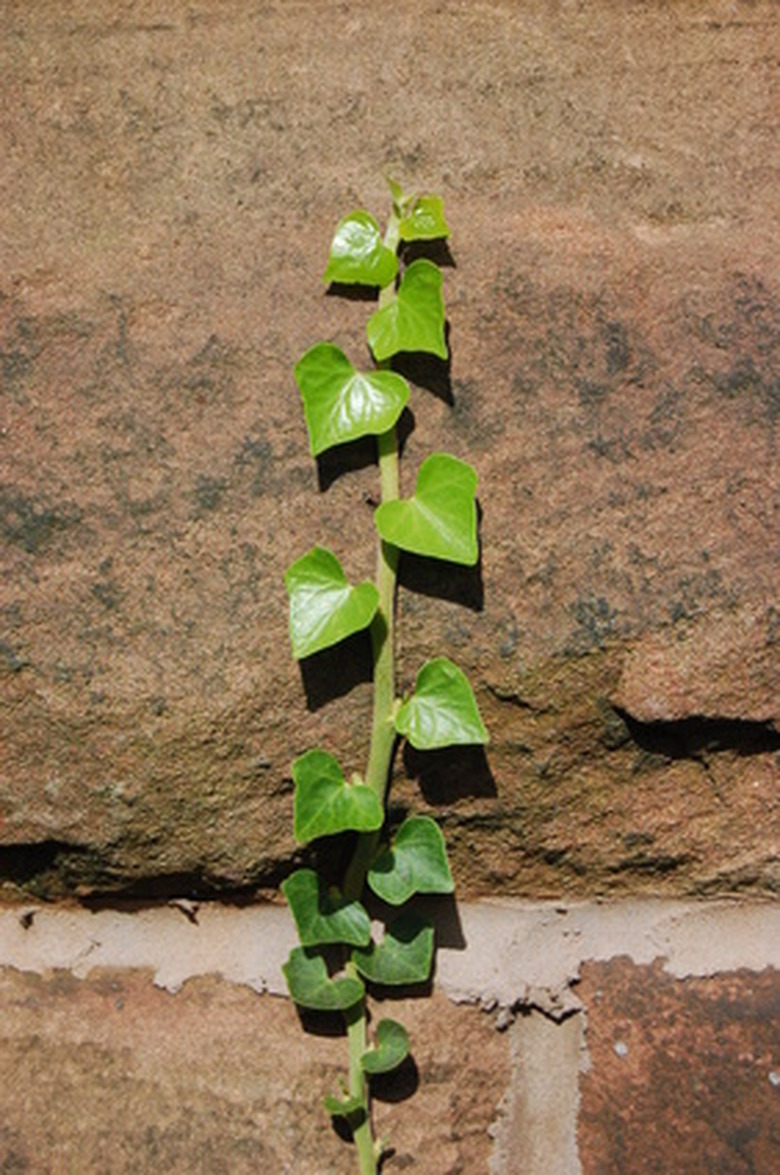How To Care For Sweet Ivy Plants
Sweet ivy (deltoidea), also known as sweetheart ivy, is a popular perennial that can be grown as as a houseplant or outdoors in the garden. Known for its heart-shaped leaves, sweet ivy cascades from containers, can be trained to climb up walls or trellises and can also be planted as a ground cover. It does well when planted alone, but also makes an interesting addition to potted arrangements or planted among flowers in outdoor landscaping.
Step 1
Choose a location that receives an equal mix of sun and shade, but no direct sunlight. If growing the ivy indoors, place near a north- or east-facing window.
Step 2
Plant sweet ivy in a peat-based potting mix to help ensure that the correct amount of water is retained. If planting in a container, add a handful of small pebbles to the bottom of the pot. If planting outdoors, combine the potting mix with the soil in your garden when you are preparing the planting site.
- Sweet ivy (deltoidea), also known as sweetheart ivy, is a popular perennial that can be grown as as a houseplant or outdoors in the garden.
- It does well when planted alone, but also makes an interesting addition to potted arrangements or planted among flowers in outdoor landscaping.
Step 3
Water sweet ivy when the top layers of soil feel dry to the touch. Add water until it begins to run into the drip pan on your pot or, if planted outdoors, until the top 4 inches of soil are moist.
Step 4
Fertilize container-grown sweet ivy once per month with a water-soluble houseplant fertilizer. If grown outdoors, add a 12-4-8 fertilizer once in spring and again in early fall.
Step 5
Clip the ivy back with pruning shears when it begins to outgrow available space. If planted outdoors, it may be necessary to pull up ivy that has taken root when allowed to come in contact with the soil.
Step 6
Examine sweet ivy often for signs of disease or pest infestation. If you notice yellowing or dropped leaves, spots or unexplained wilting, clip off a small section of the affected plant and take it to your local extension office or gardening center for diagnosis and treatment advice.
- Water sweet ivy when the top layers of soil feel dry to the touch.
- If you notice yellowing or dropped leaves, spots or unexplained wilting, clip off a small section of the affected plant and take it to your local extension office or gardening center for diagnosis and treatment advice.
Tip
Sweet ivy is very attractive when planted in hanging baskets.
Warning
Sweet ivy is poisonous to animals, so use caution when planting in a location that your pets can access. Do not over-water sweet ivy. Plants that remain overly moist for too long can quickly be killed by root rot.
Things Needed
- Peat-based potting mix
- Fertilizer
- Pruning shears
